Philodendron ‘Florida Beauty’ is a variegated cultivar of Philodendron ‘Florida’, a Philodendron pedatum x P. squamiferum hybrid created by Robert McColley in the 1950s.
It has multi-lobed dark green leaves with whitish, cream, lime green, pale green, or yellowish variegations, i.e., marbling, speckles, splotches, marbling, sectors, half-moon, etc. Sometimes, an entire lobe or leaf may have this variegation. What better way to create a sensation tropical backdrop than buy this easy-to-grow plant?
Discover more about this stunning show stopper, including care tips (light, humidity, soil mix, watering, temperature, fertilizer, etc.) and propagation.
We will also cover Philodendron Florida Beauty vs. Florida Ghost, P. pedatum, Florida Green and Philodendron Rudolph to help avoid any confusion or correctly identify each plant if mislabeled.
Lastly, we have places to buy Florida Beauty in the US, the UK, Canada, Australia, Indonesia, Thailand, New Zealand, etc., including Etsy.com, eBay, Facebook, and Instagram.
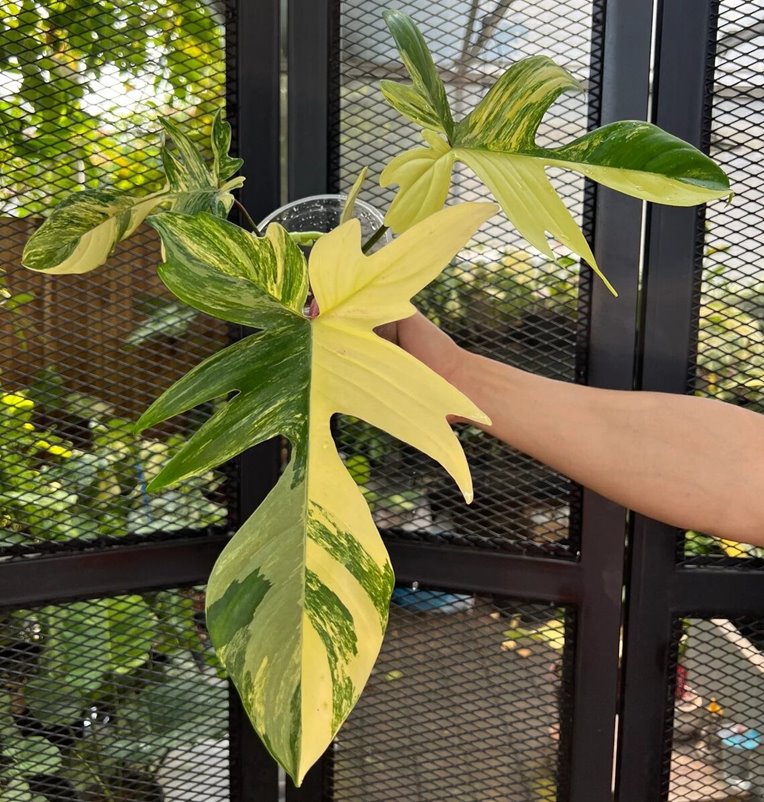
Contents
- Quick overview
- Description and identification
- Is the variegation stable, or do plants revert?
- Philodendron Florida Beauty vs. Florida Ghost
- Philodendron Florida Beauty vs. pedatum
- Philodendron Florida Beauty vs. Florida or Florida Green
- Philodendron Rudolph vs. Florida Beauty
- Philodendron Florida Beauty variegated care
- Philodendron Florida Beauty propagation
- 1. Water propagation
- 2. Soil propagation
- 3. Air layering
- Issues or problems
- Where to buy Philodendron Florida Beauty plant
- Frequently asked questions (FAQs)
Quick overview
- Scientific or cultivar name: Philodendron ‘Florida Beauty’
- Common names (other names): Philodendron Magic Mask, Philodendron squamiferum Magic Mask, Florida Beauty Variegata, Florida Beauty Philodendron
- Family: Araceae
- Toxicity: All plant parts are harmful or toxic to pets and humans because their sap has insoluble calcium oxalates. Chewing it will cause severe oral irritation and a burning sensation. Also, patients will have a swollen mouth, tongue and lips. More signs include swallowing difficulties, drooling, loss of apetite, etc.
- Care level: Easy or low maintenance.
The origin of Philodendron ‘Florida Beauty’ isn’t so clear. But botanists believe it may be a variegated cultivar of Philodendron ‘Florida’, and it doesn’t have an official Latin or scientific name.
For those who know a bit of history, you know that Philodendron ‘Florida’ is a Philodendron pedatum x P. squamiferum hybrid created by Robert McColley in 1956. It has green-multi-lobed leaves and is sometimes sold as Florida Beauty Green or Green Form.
Therefore, it should be clear that a Philodendron ‘Florida Beauty’ is variegated. To emphasize its variegated version, some people refer to the plant as Philodendron Florida Beauty Variegata or variegated. But if labeled has the word ‘Green’, it is not variegated.
Description and identification
Like both parents, Philodendron Florida Beauty is an appressed climbing hemiepiphyte. A hemiepiphyte is a plant with epiphytic (growing on host trees) and terrestrial (ground) growth phases.
Also, it morphs like most of the other Philodendrons. So, you expect the baby plants, juvenile, and adult or mature plants to look different.
However, compared to both parents, it has a relatively faster growth rate and can grow up to 6 to 8 feet inside your home if you give it a place to climb.
To identify this plant quickly, look at the leaves and petiole. Philodendron Florida Beauty has multi-lobed dark green leaves variegations that may be whitish, cream, yellowish, pale green, or lime green (streaks, marbling, sectors, splotches, half-moon, etc.). Also, each leaf appears different from the other, and the lobes may be further lobed except for the slightly larger anterior lobe.
The leaf shape and lobes closely resemble Philodendron pedatum. But their petioles are reddish and warty or bumpy, while P. pedatum has smooth petioles that tend to be medium green to dark green. But they, too, may have a reddish tinge.
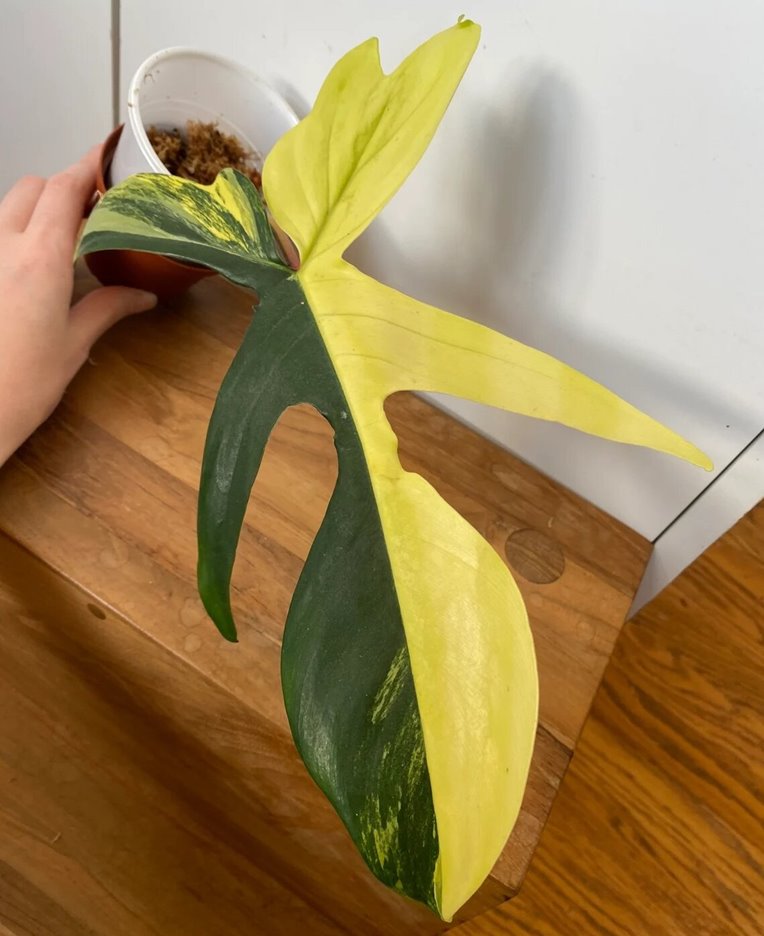
Is the variegation stable, or do plants revert?
The variegation responsible for the Philodendron Florida Beauty is chimeral and specifically sectorial. So, you expect it to be unstable and unpredictable, and each leaf is different from the other. Also, there is a chance the plant may revert to green.
However, by carefully selecting nodes with variegated leaves and removing any leaves that revert, you can preserve the variegation just before the node that reverted.
Philodendron Florida Beauty vs. Florida Ghost
These two are hybrids of Philodendron Florida and have multi-lobed leaves with the same shape. However, Florida Beauty has dark green leaves with whitish, cream, yellowish, or mint variegations.
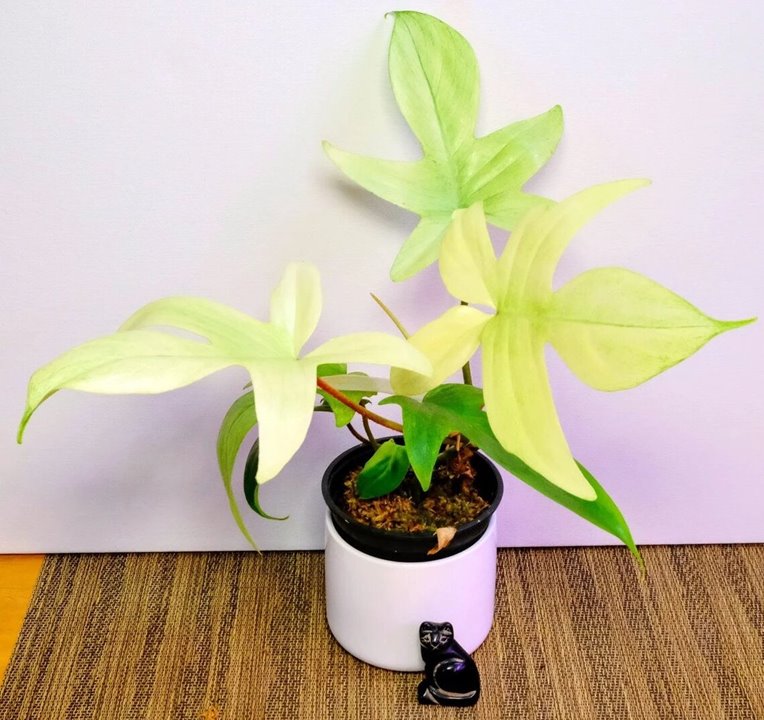
On the other hand, Florida Ghost leaves are not variegated. But instead, their color transitions from whitish, cream, or pale green to lime green or yellow-green, then solid dark green as they age.
Philodendron Florida Beauty vs. pedatum
Telling the difference between these closely related plants shouldn’t be very hard. Just consider their leaves, including petioles.
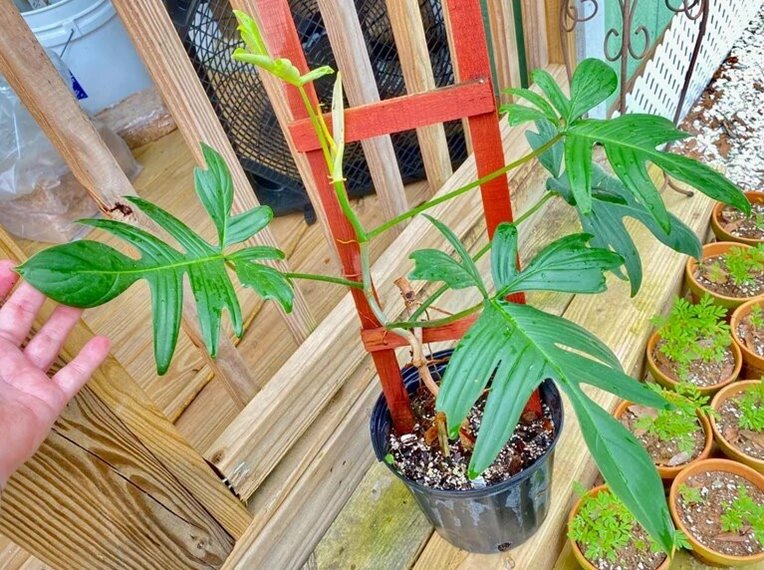
Florida Beauty leaves are variegated, and their petioles have wart-like growths or bumps, while P. pedatum leaves are dark green and petioles are smooth. Even if you have variegated P. pedatum, they will still have smooth petioles.
Also, it is a more aggressive and faster grower and is more expensive than pedatum.
Philodendron Florida Beauty vs. Florida or Florida Green
There isn’t much difference between these two plants, except Florida Beauty has variegated leaves while Florida (original hybrid) or green form has green leaves.
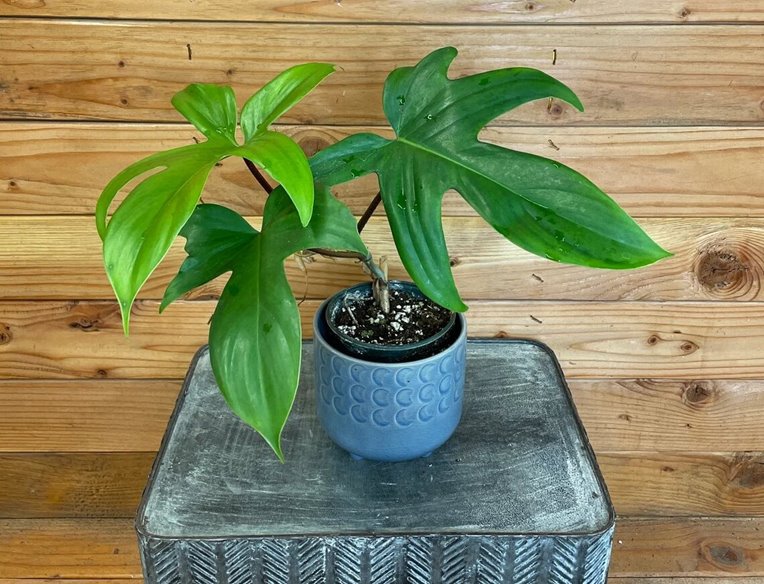
Philodendron Rudolph vs. Florida Beauty
Philodendron Rudolph is a cultivar of Philodendron Florida. It has bright red petioles and multi-lobed dark leaves shaped like a reindeer’s head, while Florida Beauty has variegated leaves resembling P. pedatum.
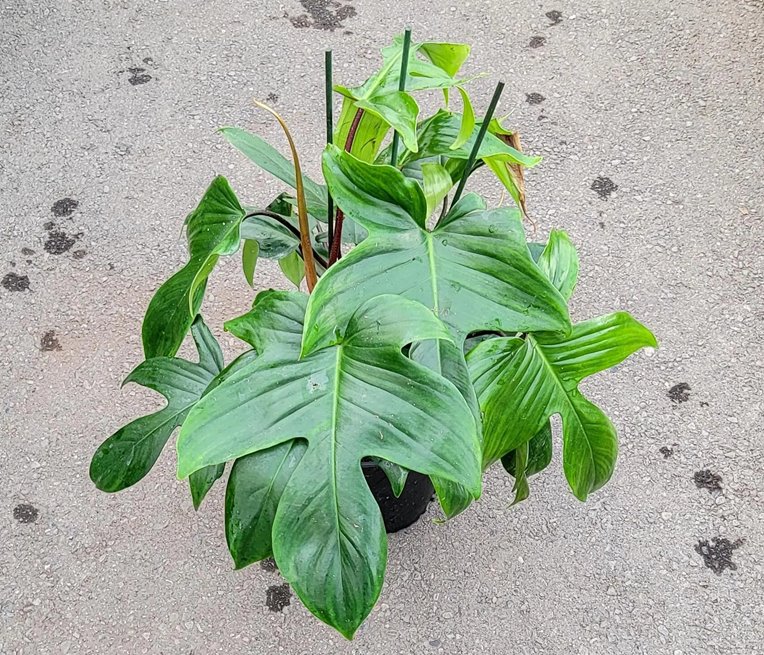
We believe there is also Philodendron Florida Beauty Red Stem, which we cannot confirm if it is the same as Rudolph.
Philodendron Florida Beauty variegated care
Philodendron Florida Beauty plant thrives well in a warm (65-85°F), humid area with bright, indirect light. Its potting mix should be airy, fast-draining, and high in organic matter, and you should water it when the top few inches of the soil feel dry. Other care needs are feeding, pruning, repotting, and support.
Here is more on care and tips:
- USDA hardiness zone: 10-12, not frost hardy.
- Humidity: Prefers high humidity, 60% more. But it can tolerate a moderate level. For very low humidity, mist your plants, move them to humid rooms, use a pebble tray, or buy a humidifier. We use LEVOIT Humidifiers Top Fill, 6 Liter, Cool Mist as so far, we are happy with it.
- Temperature: Ideal temperature is 65-85°F (81-29°C). Avoid temperatures below 50°F, cold drafts, and near heat sources.
- Light needs: Philodendron Florida Beauty will get the best coloration in bright, indirect light. A little morning sun on the east window is also OK. Otherwise, buy grow lights.
- Best soil mix: Go for a well-drained and aerated soil mix high in organic matter. An aroid mix should work well. See Etsy.com.
- Watering: Thoroughly water this plant when the top few inches (up to the 1st knuckle) of the potting mix feel dry or your soil moisture meter like XLUX reading is in the dry zone.
- Feeding: As a fast grower, it will benefit from feeding. So, feed your plant about once a month in the growing season with an all-purpose, balanced, liquid houseplant fertilizer. Miracle-Gro Indoor Plant Food (Liquid) is such a good brand.
- Pruning: Remove damaged, dead or diseased leaves with sterilized gardening shears. Also, in early spring, you can cut a bit of stem to control growth or size.
- Repotting: Repotting is after 2-3 years or when rootbound. Go for a pot that is 2-3 inches wider diameter-wise.
- Moss pole: As a climbing plant, provide and train this plant on a moss pole, trellis, trellis, etc.
Philodendron Florida Beauty propagation
Philodendron Florida Beauty propagation is via stem cutting in water or soil and air layering. Since this plant is a cultivar, seeds won’t guarantee a variegated paint.
To propagate this plant, you need a stem cutting with a node. You cannot use leaves with petiole, aerial roots, or even stems without nodes. But chonks or wet sticks will work. Unfortunately, it is hard to ensure the plant is variegated without a leaf.
We will tell you how to propagate this plant in water and give a comment on soil and air layering.
Pro tip: If you want a variegated plant, always select a node with a variegated leaf. Picking one that is all green cannot guarantee a variegated plant.
1. Water propagation
It is the easiest and less messy method that will give you a chance to see roots growing. But your plant won’t get nutrients in the soil and when you finally transplant it, expect some shock.
a). What you need
- a jar
- gardening shears
- 70-90% rubbing alcohol for sterilization
- A rooting hormone. While it is optional, we highly recommend it as it will speed rooting and prevent rot.
b). Steps to follow
- Find a healthy stem with at least a node and cut it just below the node, about ¼ an inch away, with your sterilized gardening shears. Then, snip any lower leaves if it has more than two.
- Apply your rooting hormone on the cut end, i.e., the one that will be inside the water.
- Add water to your jar and dip your cutting, ensuring it covers at least a node. However, ensure no leaves are immersed in water as they will root.
- Place your cutting in a warm place with bright, indirect light.
- Refill the water when the level goes down and replace it every 4 to 5 days or if it appears cloudy.
By the end of the 6th week, your plant should have rooted and be ready for transplant. However, since prevailing conditions will affect how fast it occurs, it may take longer. So, wait until the roots are a few inches long.
2. Soil propagation
Growing roots will benefit from nutrients in the soil, and your plant will suffer less transplant shock if you choose soil propagation. It is our favorite method.
Instead of dipping the cutting in a jar with water, grow it in your potting mix, ensuring you bury at least a node. Then thoroughly water the plant and move it to a warm, humid place with bright indirect light.
Keep the soil moist, and after a few weeks, it will grow roots, and you will see new growth. When you are satisfied with the size, you can transplant it.
Pro tip: If you don’t have a greenhouse cabinet or a humidifier to keep humidity high, cover the cutting with a transparent plastic bag, leaving a small opening for breathing.
3. Air layering
It happens by wrapping moist sphagnum moss on a node of the selected stem while still attached to the mother plant. Next, keep the sphagnum moss moist and aerated.
Roots will soon start growing, and when long enough, you can cut off the stem from the mother plant and grow it in its pot.
Lastly, it is good to mention that this method will guarantee the highest success rate, but some find it not aesthetically appealing sphagnum moss tied on the stem.
Issues or problems
Diseases (bacterial and fungal leaf spots or blights) and pests (mealybugs, spider mites, aphids, thrips, or scale insects) don’t present a big challenge. Isolate new plants and practice proper sanitation to prevent diseases. And if you see pests, neem oil, horticultural oil sprays, and insecticidal soaps will help you.
The other issue you may have include leaves turning yellow, brown tips and edges, brown or black spots, leaves curling, and your plant drooping. All these are due to growing conditions except for spots that may occur due to pests and diseases. Check the temperature, and avoid direct sun and cold drafts. Also, don’t underwater, overwater, or overfeed your plant.
Lastly, another possible problem is root rot if you are fond of overwatering your plant or your potting mix doesn’t drain. You will see black or brown mushy roots and other signs like stunted growth, mushy stem base, smaller than usual leaves, etc. Repot your plant, cutting off any decayed sections with sterilized gardening scissors.
Where to buy Philodendron Florida Beauty plant
If you are looking for Philodendron Florida Beauty on sale, the best place is Etsy.com. This marketplace has sellers from the US, UK, Canada, NZ, NL, Australia, Thailand, etc. Also, their prices are excellent, and you will find some vendors willing to ship this plant to your location.
The other places to consider are eBay, Facebook, and Instagram, which like Etsy, have vendors from across the globe.
More locations where you can buy this plant worldwide, and their prices are as follows.
North America (the USA and Canada)
- Peace Love and Happiness Club (Seattle, WA) - $ 398.00
- PLANTQUEENS (Minneapolis, MN) - $750
- Plantegy (Toronto, Canada) - $288
- House of Monstera (Toronto, Canada) – Sold out
Europe (The UK and Germany)
- AX Bud Aroids (Bristol, UK) - £160.00
- Foliage Dreams (Frankfurt, Germany) - €249,90
- Jungle Haven (London, UK) - £175.00
Australia
- Nursery 2 U (Queensland, Australia)- $1,500.00
Asia (Indonesia and Thailand)
- Pudora (Jawa Barat, Indonesia) $200.00
- Aroid Space (Jawa Timur, Indonesia) - $315.00
- Aroid Sale (East Java, Indonesia) - $120
- Plant Buys (East Java, Indonesia) - $129.00
- PlantShopRizki (Jawa Barat, Indonesia) - $100
- Natural Orchid Co. (Bangkok, Thailand) - 117,000 Baht
- BOTGarden (Nonthaburi, Thailand) – $342-$402 (Tissue Culture)
- SudsnPetals (Sunny Singapore) – sold out
Lastly, to get more locations, including those near you, google “Philodendron Florida Beauty for sale” and see what pops up.
Note: Phytosanitary certificate and tissue culture (TC)
If importing this plant from outside the US, request a phytosanitary certificate. Some vendors offer it for free for some purchase amounts. Also, ask vendors if their Philodendron Florida Beauty is a tissue culture or not if it concerns you.
Frequently asked questions (FAQs)
Yes. This variegated Philodendron Florida Beauty is a rare plant that only a handful of vendors have. None of the large-scale growers or big box stores sell it. Also, it is unlikely that your local tropical plant vendor has it.
The price of Florida Beauty ranges from $150 to $800. However, prices are slightly lower in Asia, starting from $120, while Australia has the highest prices. Usually, the size of the plant (cutting, small or large) and location (or where you buy it) will affect the cost you incur.
Ideally, yes. All Philodendron Florida Beauty plants are variegated unless labeled as green. However, some vendors don’t include green labeling. So, always see the exact plant on sale.

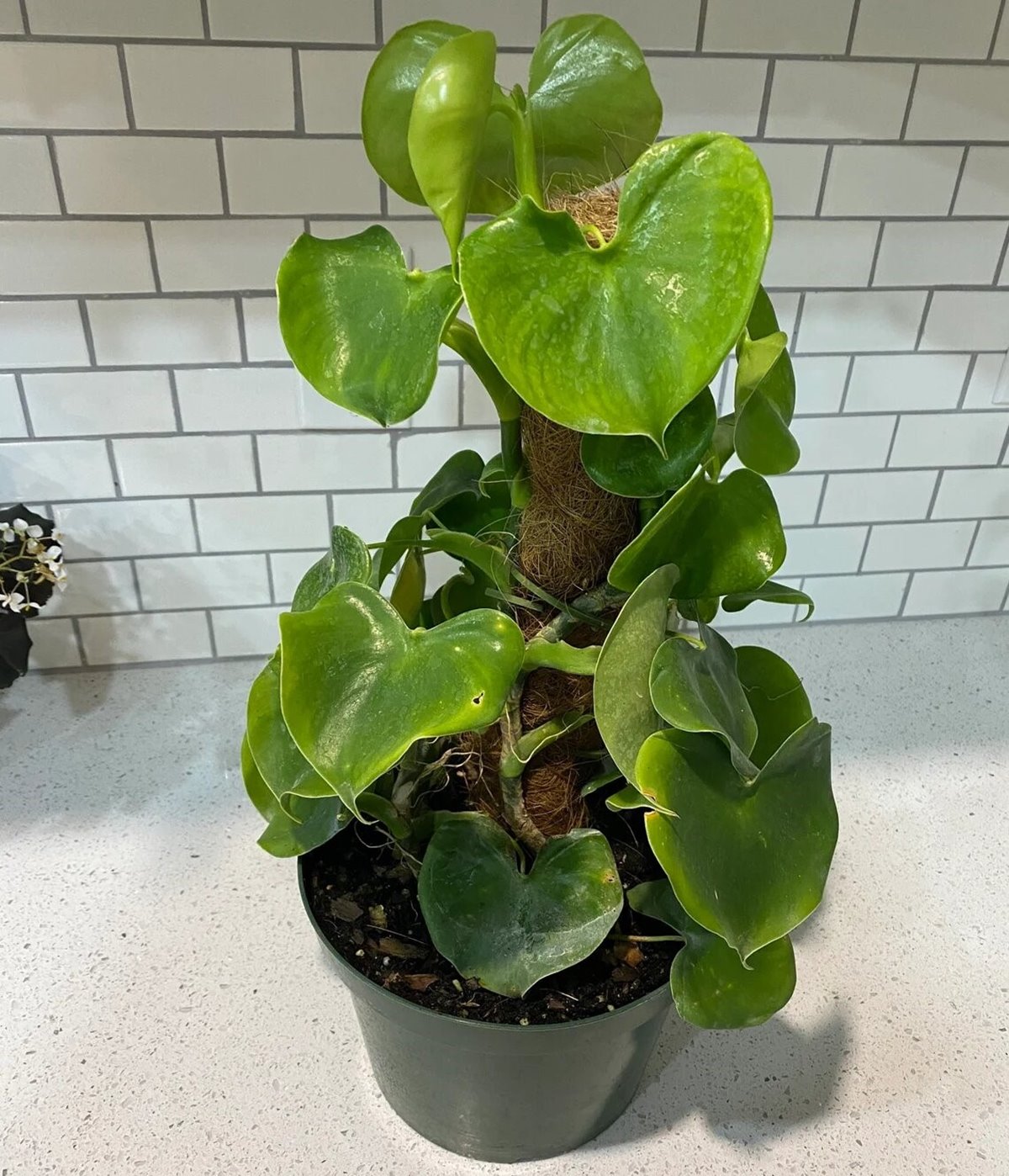
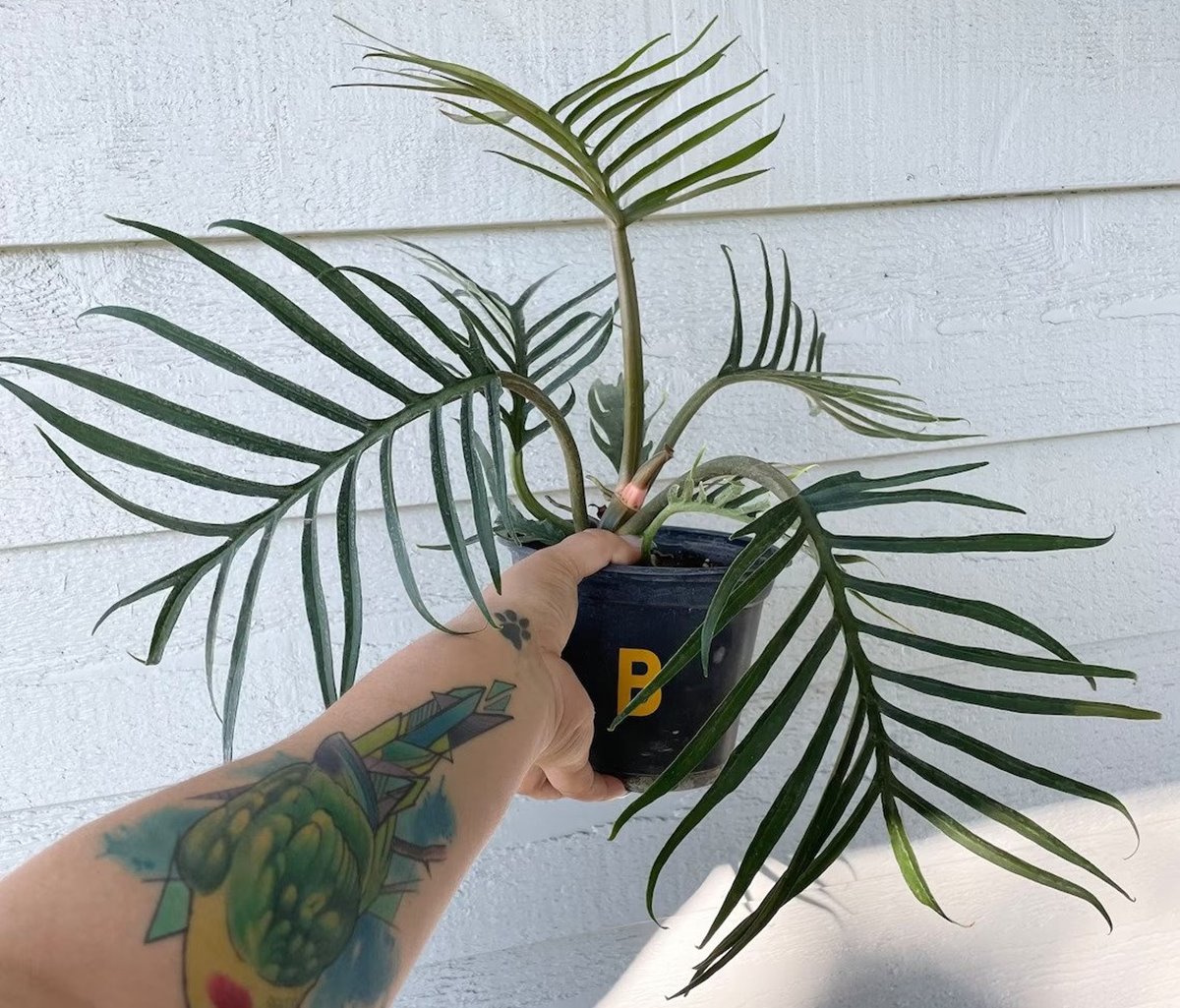
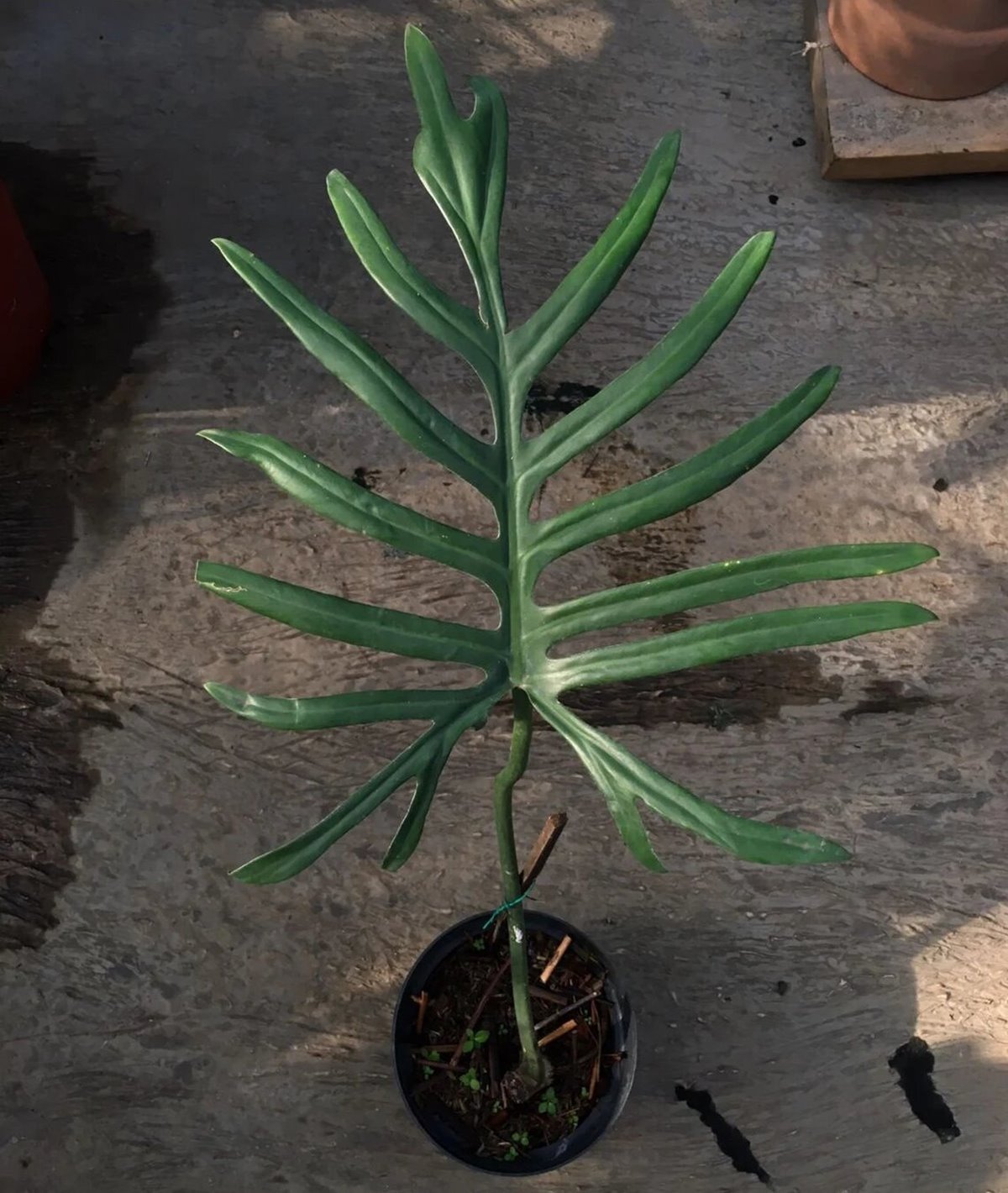

Plantipus
beautiful plant, good article about Philodendron Florida Beauty Variegated , i like it, thanks
Plantipus
I have many Philodendron Florida Beauty Variegated also...